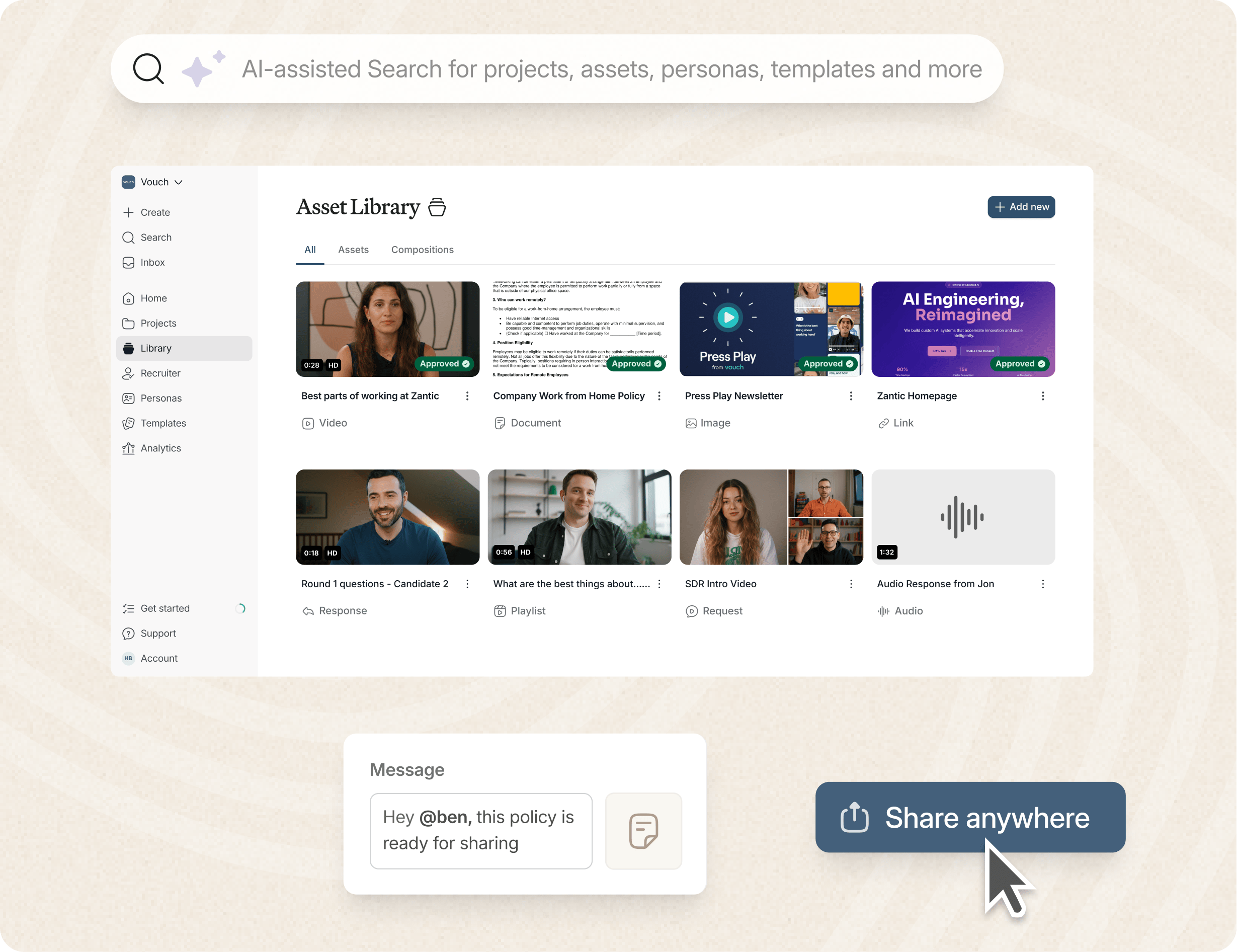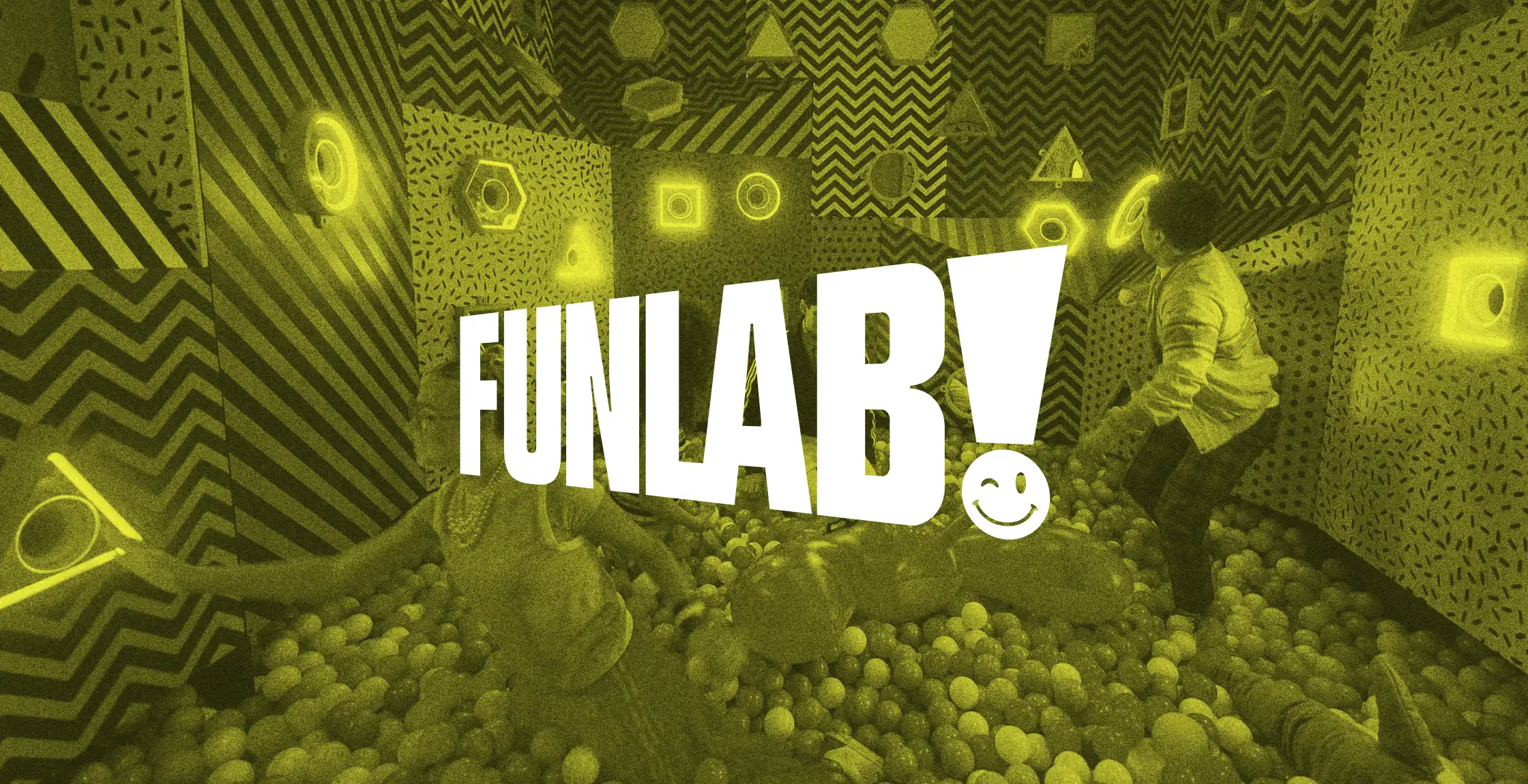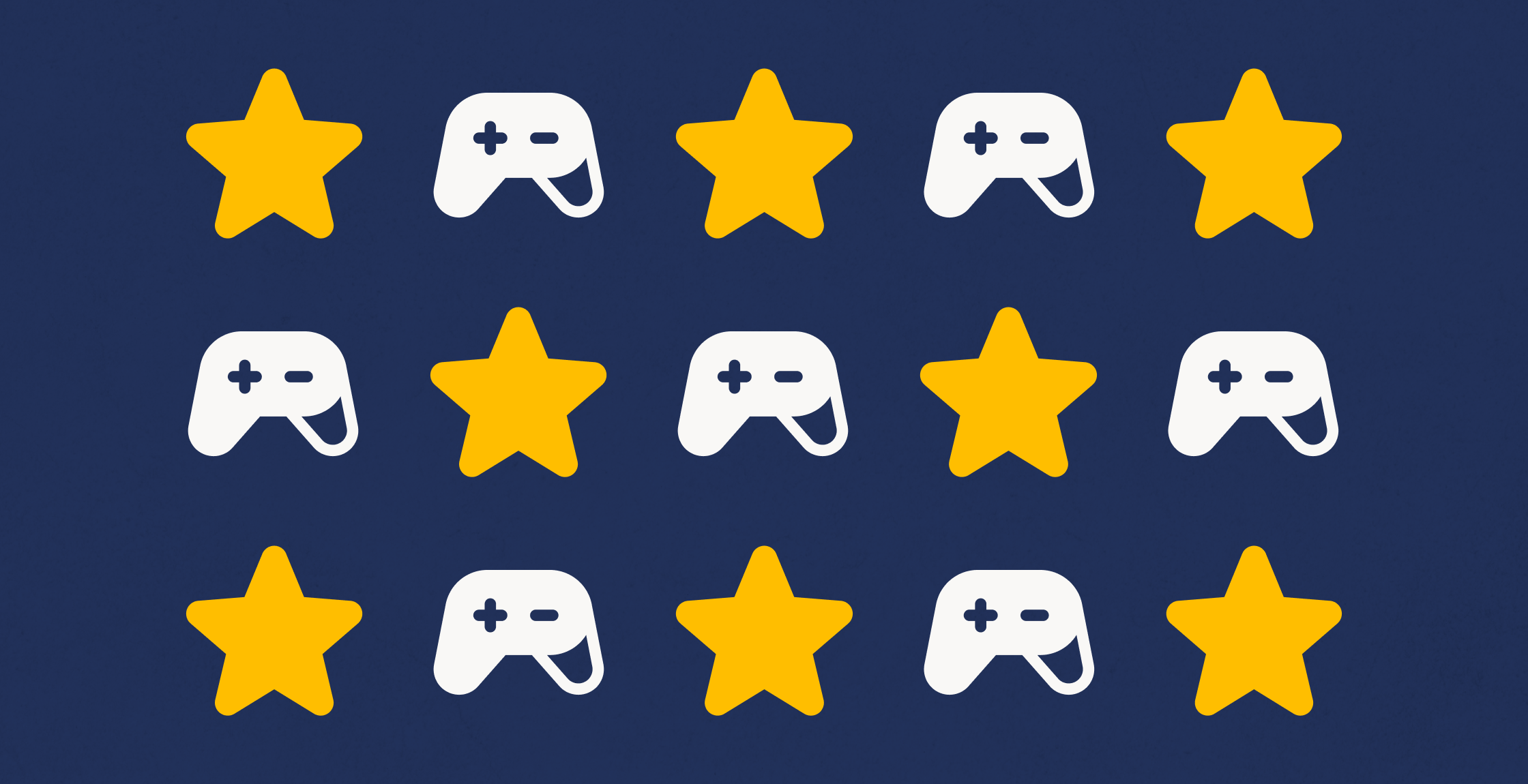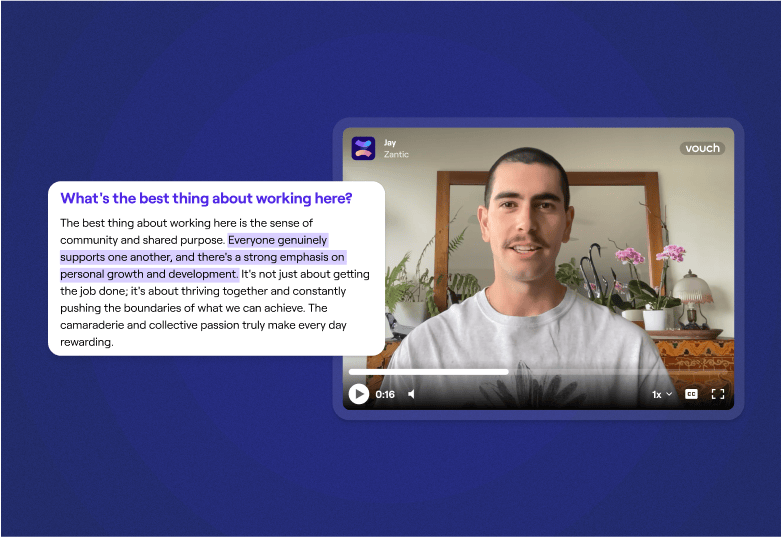Are you looking for innovative ways to boost employee motivation and engagement amongst your team, especially when it comes to routine everyday tasks?
Workplace gamification, combined with tools like Vouch for simple employee feedback, might be the perfect solution.
Workplace gamification involves adding video game-like elements to your work processes to increase employee motivation and productivity. By introducing points-based leaderboards, simple quizzes, and rewards, you can transform work-related tasks into exciting new challenges.
However, it's important to approach your gamification strategies with caution, ensuring that the game mechanics promote long-term growth rather than short-term wins.
So let's get started.
Key Takeaways:
- Gamification is an effective HR strategy to increase employee motivation and engagement.
- Integrating game-like elements into work processes can make work more enjoyable and foster a sense of competition.
- Workplace gamification improves communication effectiveness, enhances company culture, and boosts employee satisfaction.
- It is important to design gamification strategies that promote long-term growth and ethical behavior.
- Successful gamification programs involve thoughtful planning, employee involvement, and monitoring of results.
What is Workplace Gamification?
Gamification in the workplace is a game-changing strategy that turns tedious tasks into exciting experiences with desirable rewards and a sense of achievement, boosting employee engagement and productivity.
Here's how:
- Points Systems: Employees earn points for completing tasks or showing desired behaviors, which can be exchanged for rewards, creating a sense of accomplishment.
- Levels and Badges: These signify employees' achievements and progression, giving them a sense of pride and motivation to excel.
- Competitions: Whether through leaderboards or team challenges, friendly rivalry encourages employees to push their limits, adding excitement to work.
- Training Programs: Gamifying training with quizzes, simulations, or interactive modules makes learning more engaging and enjoyable, creating a hands-on learning environment.
- Overall Impact: Workplace gamification transforms how companies motivate and engage employees, creating an energized and high-performance work environment.
The AI-enabled workspace for talent teams.
- Unified workspace for talent teams
- Accelerate hiring with AI tools
- Auto-generate polished hiring and employer brand content
- Easily repurpose assets across all channel

Is Gamification Effective In the Workplace?
Absolutely. Research, studies, and employee feedback sessions have consistently shown that implementing gamification in the workplace can significantly improve employee engagement and productivity.
By improving employee happiness at work, you'll also improve your overall company culture and employer brand - and that's something we are big on at Vouch!
Using game-like elements, you can create a more stimulating work environment and even help your employees with their skill development, such as soft skills and self-reflection analytics skills, as they strive to level up or gain a new badge or reward.
Here's why workplace gamification is so effective:
- Gamification can provide employees with a sense of autonomy, especially when it comes to mundane tasks, allowing them to have more control over their work processes and decisions. This sense of ownership can boost their motivation and commitment to achieving their goals.
- Gamification has proven to be particularly effective for tasks that require learning and knowledge retention, as evidenced by the rise of LMS. By making the learning experience interactive and engaging, it enhances employees' ability to absorb and apply new information.
- One key benefit of gamification is the opportunity for skill improvement. Through gamified activities, digital badges, and challenges, employees can develop and refine their skills, leading to personal growth and increased job satisfaction.
- Public recognition is another powerful motivator that gamification provides. Leaderboards, badges, and rewards showcase employees' achievements, boosting their confidence and reaffirming their value within your organization.
- By introducing game elements and engaging activities, workplace gamification can help reduce boredom and inject a sense of fun into daily tasks and learning activities. This not only enhances the overall work experience but also promotes a positive and vibrant company culture.
- "Organizations that use gamification in business applications increase employee productivity by up to 50%." - Gartner.
How Do You Keep Track of Results with Your Gamification Program?
When rolling out a gamification program at work, it's crucial to monitor and showcase the results effectively to boost transparency and motivation among employees - which is a lot similar to online course.
Here are some key points to keep in mind:
- Track progress: Monitor the program's progress to ensure it's enhancing employee engagement and productivity.
- Have visible achievements: Use whiteboards or notice boards to display winners in small offices, promoting healthy competition and motivation.
- Provide real-time updates: For organizations with multiple locations or remote workers, consider using digital display screens or office signage to provide live updates on the program's performance.
- Use online scoreboards: Use online platforms to track and display competition details, allowing employees to monitor their progress and compare their performance with others.
- Ensure data analysis: Regularly evaluate and analyze the data from your gamification program to make informed decisions and adjustments for optimal features and goals.
How Do You Design A Workplace Gamification Program?
Designing a successful workplace gamification program requires careful planning and active employee involvement. By following best practices, ensuring compliance with your overall HR, and implementing effective strategies, you can create a program that drives engagement and boosts employee productivity.
Here are the key steps:
- Start with Clear Goals: Set specific, measurable objectives that align with your organization's overall strategy to keep your gamification efforts focused and effective.
- Involve Employees: Encourage employees to contribute ideas and solutions, ensuring their needs and motivations are considered for a more engaging program.
- Plan and Iterate: Dedicate time to plan and refine your gamification framework based on feedback and data analysis, using tools like HubSpot's Marketing Software for tracking and feedback.
- Consider Performance Reviews: Ensure your gamification program complements, rather than overshadows, individual performance evaluations, maintaining transparency and fairness.
- Promote Ethical Behavior: Design incentives that encourage collaboration and growth, avoiding unhealthy competition or compromises on integrity.
What are 5 Apps You Can Use To Introduce Workplace Gamification?
Here are a few apps that we love at Vouch that help gamify the workplace. Of course, many more exist, and we'd love to hear from you if you have created a workplace gamification app, too.
Some apps we love:
Spinify: This is a famous gamification app that is designed to enhance your company's workweek.
Todoist: is designed to inspire individuals to get everyday tasks done using to-do lists.
TalentCards: is a gamification platform that focuses more on employee training and engagement.
Perkville: This app is more of a loyalty program with automated rewards for employees.
Vouch: This is a plug, but a worthy one. You can easily collect employee feedback on their experiences using these ramification apps and also use these feedback videos to boost your company culture!
What Are 5 Great Quotes On Workplace Gamification?
Here are five quotes on workplace gamification that we think you'll love:
- Employee Engagement: "Gamification is 75% psychology and 25% technology." - Gabe Zichermann, Author, Speaker, and Gamification Expert
- Learning and Development: "Gamification is not about simply rewarding the user. It's about using game mechanics to engage and motivate them to achieve their goals." - Karl Kapp, Professor of Instructional Technology.
- Employee Motivation: "Gamification taps into the basic desires and needs of the user's impulses which revolve around the idea of achievement and status." - Kevin Werbach, Author and Professor at the Wharton School, University of Pennsylvania (Source)
- Behavior Change: "By gamifying the system, you can incentivize users to engage in desired behaviors and reward them for it." - Jane McGonigal, Game Designer and Author
- Productivity Improvement: "People are more productive when they are engaged and having fun." - Ron Gutman, Founder and CEO of HealthTap
FAQs
What is workplace gamification?
Workplace gamification is a modern phenomenon that involves incorporating game-like elements into work processes to increase employee engagement and productivity.
How does workplace gamification work?
Workplace gamification works by using elements like points-based leaderboards, quizzes, and rewards to make work more fun and engaging.
What are some examples of Gamification in the workplace?
Some examples of Gamification in the workplace include points systems, levels and badges, competitions, team rewards, and office rewards.
How can I gamify work?
To gamify work, you can start by identifying the key behaviors you want to encourage and then devise game elements that promote those behaviors. You can also use gamification platforms to streamline the process.
How can I keep track of the results of my gamification program?
You can keep track of the results of your gamification program by using whiteboards, notice boards, digital display screens, or purpose-built score-keeping sites.
Is Gamification in the workplace effective?
Various studies and research indicate that Gamification in the workplace is indeed effective in boosting employee engagement and productivity when implemented correctly.
How do I design a successful workplace gamification program?
To design a successful workplace gamification program, you should start with small, specific, and measurable goals that align with the organization's overall objectives. Involve employees in the design process and be mindful of potential challenges and ethical considerations.
Conclusion
Workplace gamification offers a valuable strategy for increasing employee experience, engagement, motivation, and productivity. By incorporating game-like elements into work processes and even gamified learning, you can create a more engaging work environment and provide continuous learning.
The use of rewards like gift cards, badges, and other gamification incentives creates a sense of fun and promotes collaboration within your teams.
When implementing gamification strategies, it is crucial to design them carefully, taking into account the specific needs and motivations of individual employees. Understanding what drives your team will enable you to tailor the game mechanics accordingly and create a meaningful experience.
Additionally, monitoring the effectiveness of the gamification program - using tools like Vouch to gather employee feedback, is essential to ensure its continuous improvement and success.
Like to try Vouch?
Loved by companies like Canva, Nike, Cisco, HubSpot, Amazon, and more, tools like Vouch make leveraging video in your business remarkably easy.
Be sure to book a Vouch demo today and chat with a video content expert.
You might also like

Elevate Your Brand Today With Vouch
Discover how Vouch can accelerate talent acquisition while helping you stay on-brand.






